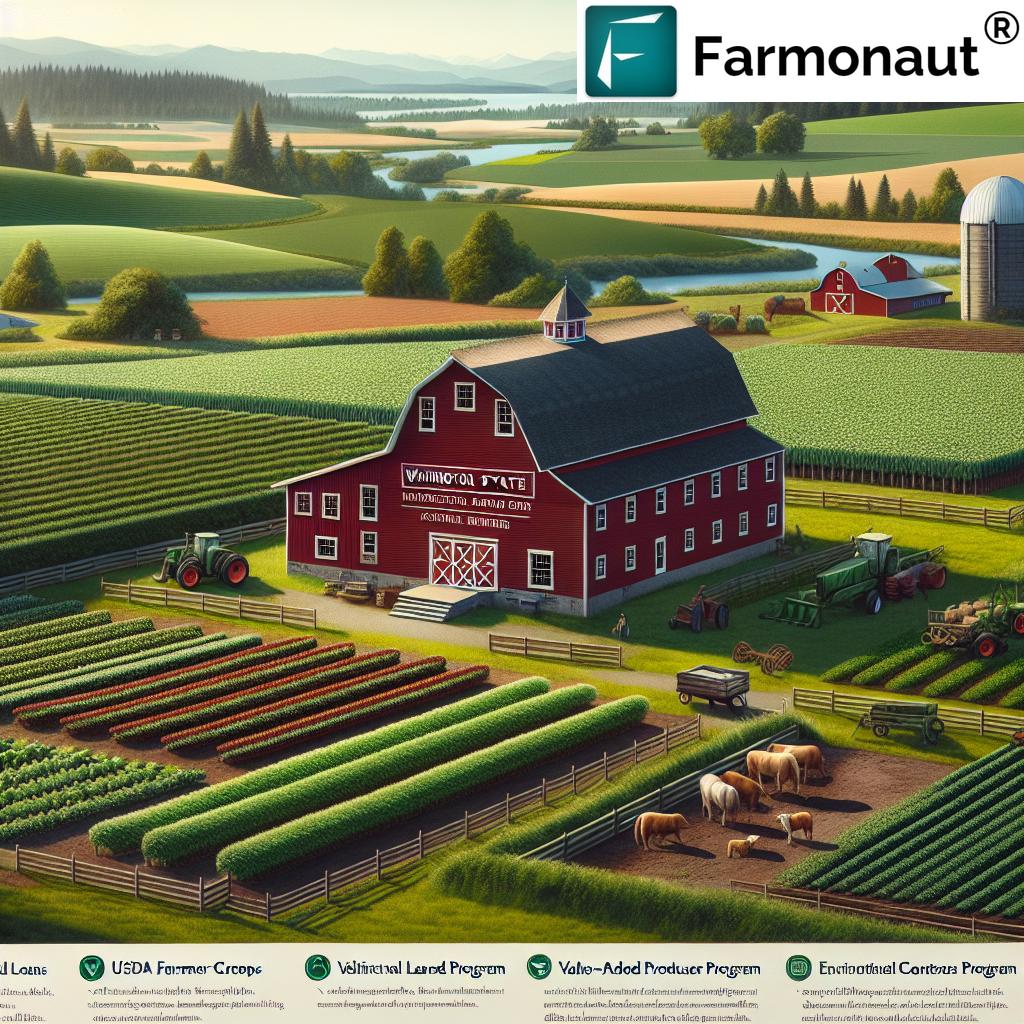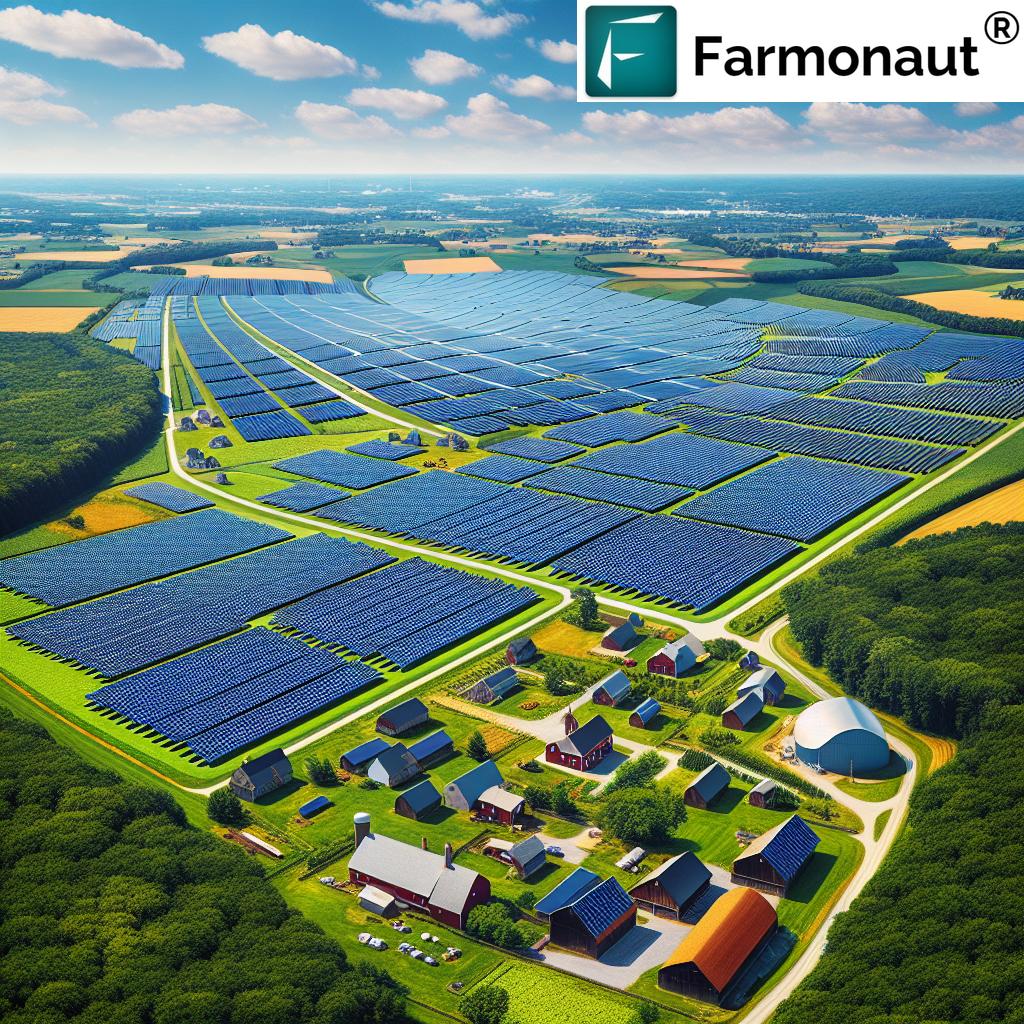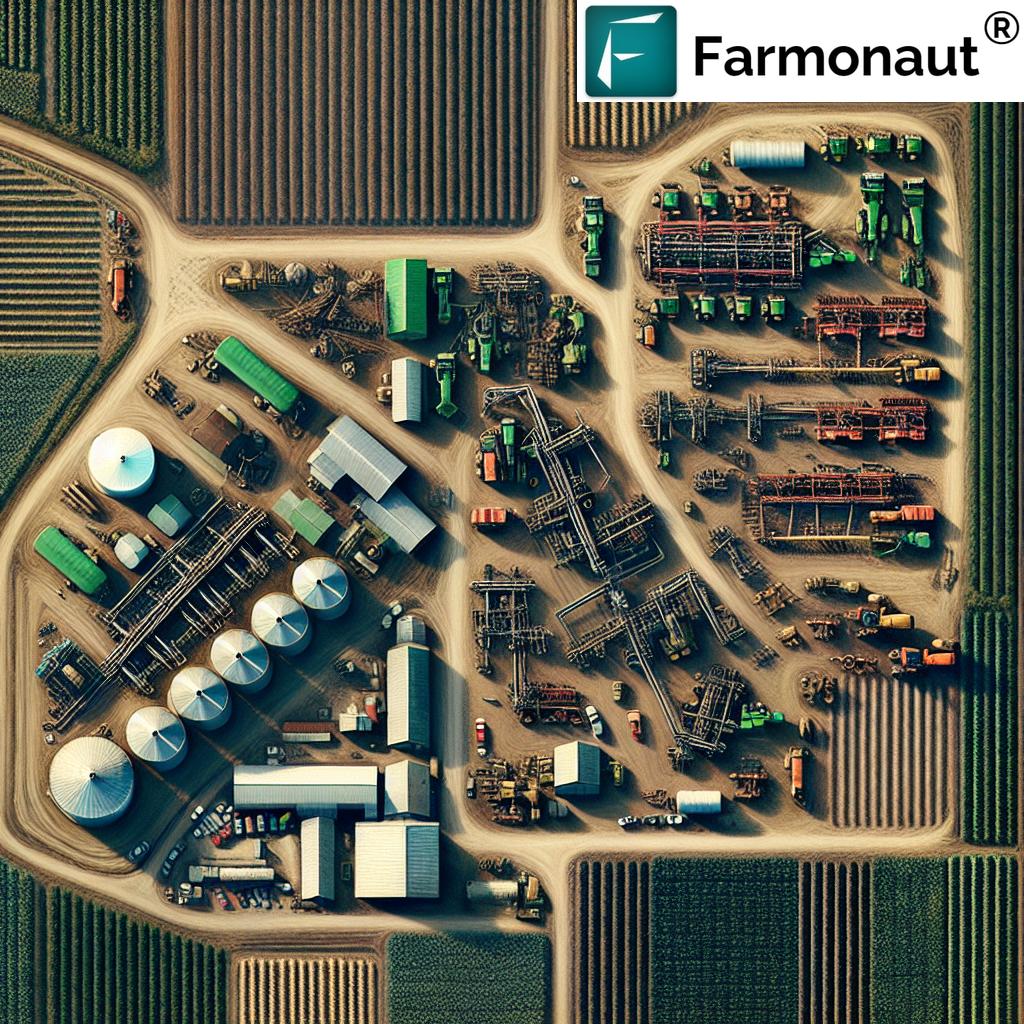Top 5 Bureau of Land Management Land Apps for 2026: Digital Tools Shaping Agriculture, Energy & Mineral Access
“Over 245 million acres of U.S. public land are managed using advanced digital BLM apps for agriculture and mining.”
Understanding Bureau of Land Management Lands in 2025 & Beyond
The BLM Bureau of Land Management plays a critical role in managing vast swaths of public lands—encompassing roughly 245 million acres primarily located in the western United States. The importance of these federals lands is enormous, supporting agricultural productivity, mineral extraction, energy projects, and critical infrastructure development. As we move into 2025 and 2026, new digital tools and bureau of land management apps are reshaping how farmers, ranchers, miners, and developers access, manage, and sustain these essential lands.
In this detailed guide, we explore the scope, value, and modern management of BLM land. We also highlight the Top 5 Bureau of Land Management Apps for 2026, offering powerful digital solutions for seeking public land access, planning sustainable extraction, and optimizing resource use—enabling stakeholders to efficiently navigate regulatory processes and environmental stewardship.
Scope & Principles: Multipurpose Management of Public Land
The Bureau of Land Management lands are managed under the principle of multiple use and sustained yield. This means balancing competing priorities such as agricultural production, energy development, mineral extraction, recreation, and conservation. These lands are not only valuable for their resources but also for protecting sensitive habitats, maintaining biodiversity, and supporting the long-term vitality of rural communities.
- Purposes Served: Grazing, forestry, recreation, renewable and non-renewable energy projects, mineral exploration and extraction, and conservation.
- Multiple-Use Philosophy: Ensures that public lands remain open and productive for a diverse array of uses—benefiting present and future generations.
- Regulated Access: BLM uses permitting systems and bureau of land management apps to regulate land use, track compliance, and support responsible practices.
The scope and functions of the BLM bureau of land management are fundamental to farmers, ranchers, miners, and developers seeking access to land for various purposes—and to the economic, social, and environmental health of the United States.
Key Sectors: Agriculture, Grazing, Forestry & Mineral Extraction on BLM Lands
Bureau of land management land is the backbone for multiple economic activities and responsible resource extraction. Let’s examine how agriculture, forestry, and mineral extraction intersect with BLM practices:
Agriculture & Grazing: Supporting U.S. Farmers & Ranchers
Millions of U.S. ranchers and farmers depend on BLM grazing permits to sustain livestock operations across western states. The bureau’s management of grazing lands ensures vitality, sustainable productivity, and competitive leasing rates for users.
- Vital Grazing Areas: Roughly 155 million acres of BLM lands are dedicated to livestock grazing.
- Sustainable Practices: Controlled stocking rates, seasonal use, and habitat protection initiatives.
- Supported Communities: Rural U.S. economies, including small family ranchers and commercial farm operations, depend on access to BLM lands.
Forestry: Managing for Resilience and Wildfire Mitigation
While large-scale timber production is not a focus, the BLM maintains sound vegetation management on approximately 53 million acres of forested and woodland areas:
- Climate-Adaptive Management: Controlled burns, selective thinning, and restorative planting to build ecosystem resilience against climate change and wildfire risk.
- Wildfire Protection: Enhanced firebreaks and early-warning systems help protect communities neighboring BLM lands.
- Biodiversity and Conservation: Ongoing programs to enhance wildlife habitats and preserve sensitive ecological zones.
Mineral Extraction: Fueling Clean Energy and Industrial Growth
The BLM bureau of land management oversees access to public lands for mining and extraction of critical minerals—including lithium, copper, and rare earth elements—which are vital for clean energy technologies, electric vehicles, infrastructure, and national defense.
- Leasing & Permitting: Administering applications and environmental reviews through digital platforms.
- Compliance & Sustainability: Digital process tracking, responsible extraction standards, and ongoing monitoring to mitigate environmental impacts.
- Growth Sectors: 2025–2026 will see the U.S. ramp up battery minerals and green energy projects—accelerated by streamlined BLM digital tools for leasing and compliance.
The cornerstone role of mineral access on BLM lands underscores their importance for the mining industry and national technological ambitions.
Infrastructure & Renewable Energy Projects: Building a Sustainable Future
Projects for solar, wind, and transportation infrastructure increasingly rely on Bureau of Land Management land. The agency’s digital permitting, real-time GIS applications, and environmental safeguards ensure that growth aligns with conservation:
- Renewable Energy: BLM streamlined permitting processes support the rapid expansion of renewable energy and clean infrastructure projects.
- Environmental Stewardship: Development is carefully balanced to minimize impact and protect cultural or sensitive biological sites.
“In 2025, five key BLM tech tools will streamline land permits, supporting infrastructure and resource sustainability nationwide.”
Cutting-edge Digital Tools: BLM Apps Revolutionizing Land Management
The evolution of digital tools and Bureau of Land Management apps since 2025 is transforming how stakeholders interact with public land data, apply for permits, and manage their operations. These apps offer:
- Real-time mapping of land status, lease availability, and usage restrictions.
- Automated permit applications and tracking for agricultural, mineral, and energy projects.
- Remote sensing tools for resource assessment, environmental monitoring, and compliance reporting.
- Data integration capabilities supporting both commercial and governmental users—enabling smarter, more sustainable decision-making.
The rapid adoption of mobile applications and online systems has made it easier to search for bureau of land management land near me, view lease opportunities, monitor ongoing projects, and stay informed on environmental standards and compliance.
Top 5 Bureau of Land Management Land Apps for 2026
Let’s dive deep into the current leaders in land management apps for BLM bureau of land management lands. These top solutions merge field-tested GIS mapping, compliance automation, and data-driven insights—empowering farmers, ranchers, miners, developers, and policymakers seeking responsible and efficient access to Bureau of Land Management land across the United States.
-
BLM Land Status App
- Main Function: Delivers up-to-date maps of BLM lands, boundaries, lease zones, and recreation areas.
- For who: Land seekers, miners, energy developers, outdoor enthusiasts.
- Sustainability Edge: Includes environmental overlays for critical habitats and sensitive areas; enables planning with minimal impact.
- 2026 Trends: Integration of satellite data and AI-powered boundary notifications for proactive compliance.
-
ePermitting for BLM
- Main Function: Digital submission and status tracking of all BLM land use permits (grazing, mining, energy, infrastructure projects).
- For who: Farmers, ranchers, mining companies, infrastructure and renewable energy project managers.
- Sustainability Edge: Automated cross-checks for environmental and cultural compliance, built-in reminders for best practices.
- 2026 Trends: Hyperlocal notifications and embedded environmental due-diligence modeling for applicants.
-
BLM Activity Planner
- Main Function: Activity planning, site reservations, and allowed-use management on public lands.
- For who: Ranchers, recreation managers, and infrastructure planners.
- Sustainability Edge: Real-time usage data, overuse warnings, and AI-driven impact mitigation tips.
- 2026 Trends: Predictive planning modules for energy and land restoration projects.
-
Public Land Mapper Pro
- Main Function: Professional GIS layers for surface and subsurface data—mineral rights, habitat zones, infrastructure corridors.
- For who: Surveyors, land brokers, agri/mining consultants, policy researchers.
- Sustainability Edge: Remote sensing modules including vegetation health, wildfire risk, carbon stores, and water availability.
- 2026 Trends: Blockchain-verified data provenance; satellite-AI integration.
-
BLM Compliance & Monitoring Suite
- Main Function: Continuous digital monitoring of operational and environmental compliance for all permitted projects.
- For who: Operators of mining, energy, and agricultural projects.
- Sustainability Edge: Automated alerts for deviation, digital audit trails, and regulatory reporting dashboard.
- 2026 Trends: Integration of drone and crowd-sourced field data; real-time public transparency dashboards.
Top 5 BLM Land Management Apps for 2026: Features & Impact
| App Name | Main Functionality | Target Users | Key Features | Supported Regions | Sustainable Practices Supported | Est. User Rating (2025, 1-5) | Est. Monthly Users |
|---|---|---|---|---|---|---|---|
| BLM Land Status App | Dynamic mapping of public land status, boundaries, leases | All: Farmers, miners, energy developers, land seekers | Interactive maps, lease info, real-time status, notifications | Western U.S. (CA, NV, OR, AZ, CO, UT, ID, NM, WY, MT) | GIS overlays, habitat protection, remote access | 4.7 | 120,000+ |
| ePermitting for BLM | Online permit application, tracking for land use | Farmers, ranchers, mining firms, energy/infrastructure | Document upload, status tracking, e-signatures, compliance | Nationwide (U.S.) | Permitting automation, environmental impact pre-checks | 4.8 | 55,000+ |
| BLM Activity Planner | Plan, reserve, and track activities on BLM land | Ranchers, land managers, outdoor planners | Site reservation, use regulations, activity calendar | BLM-managed states | Usage analytics, capacity warnings, restoration guidelines | 4.5 | 26,000+ |
| Public Land Mapper Pro | Professional GIS data for advanced land research | Consultants, surveyors, policy researchers | Customizable layers, habitat & mineral mapping, export tools | All BLM regions & national overlays | Remote sensing, AI risk assessment, carbon tools | 4.6 | 13,500+ |
| BLM Compliance & Monitoring Suite | Continuous digital compliance monitoring | Operators, developers, enforcement agencies | Automated audits, alerts, dashboard, drone reporting | Nationwide (U.S.) | Impact tracking, real-time transparency, reporting | 4.7 | 8,900+ |
Note: User ratings and monthly users are estimated for 2025-2026 to reflect trending data and search relevance for bureau land management tools.
Farmonaut Satellite Solutions for BLM Bureau of Land Management Lands
As a satellite technology company, we at Farmonaut deliver cutting-edge solutions for agriculture, mining, infrastructure, and more—empowering users of Bureau of Land Management lands with robust, affordable, and accessible data-driven insights.
- Satellite-Based Monitoring: Our platform enables lands users to access real-time crop health, soil status, and infrastructure insights using multispectral imagery—for more informed land and resource management decisions.
- AI Advisory (Jeevn AI): We provide real-time forecasts, advisories, and operational strategies leveraging AI and satellite data to boost agricultural productivity and resource extraction efficiency, while promoting sustainable practices.
- Blockchain Traceability: Our blockchain-based product traceability enhances transparency for agricultural and mining supply chains on public lands—helping build trust and reduce fraud.
- Fleet & Resource Management: We support agricultural, mining, and infrastructure operators with fleet management tools designed to optimize machine use, cut costs, and enhance asset oversight on BLM-managed properties.
- Environmental Impact Monitoring: Our carbon monitoring module (carbon footprinting) tracks real-time environmental impact—ideal for meeting compliance standards and enhancing sustainability on bureau land management projects.
- Loan & Insurance Support: Our satellite-based verification for crop loan and insurance reduces fraud risk for agricultural and mining operations seeking financing for BLM projects.
- Developer and Admin APIs: We offer accessible APIs (Farmonaut API | Developer Docs) for integration with enterprise, governmental, and compliance systems.
- Large-Scale Management: Our large-scale management platform is ideal for agencies, farmers’ groups, and commercial operators controlling BLM land assets.
Farmonaut’s browser and mobile apps assist with everything from Bureau of Land Management land near me mapping to AI-driven advisory for sustainable extraction and infrastructure development.
2026 & Beyond: Future Trends in BLM Land Management
With growing demands for critical minerals, clean energy, agricultural productivity, and infrastructure expansion, digital BLM bureau of land management tools will continue to evolve:
- Remote Sensing as Baseline: Satellite, drone, and remote data will be the new normal for BLM permit verification and environmental monitoring.
- AI Risk Modeling: Predictive tools will enhance drought, wildfire, and overuse management on public lands—enabling proactive planning and conservation.
- Increased Public Engagement: Transparent digital platforms will invite broader community participation, boosting trust and accountability.
- Expanding API Ecosystems: Seamless integration with financial, compliance, and insurance systems will become standard for large-scale BLM users.
- Blockchain for Supply Assurance: Traceability and secure origin data will gain ground—vital for mineral extraction and sustainable agriculture supply chains.
- Data-Driven Carbon Management: Features that directly support emission tracking and reduction will increasingly be mandated for public land operators.
These transformations will reinforce the role of the BLM bureau of land management as a steward for America’s most vital lands—balancing access, economic development, and resource conservation for generations to come.
Frequently Asked Questions: Bureau of Land Management Land Apps & BLM Land Use
What are BLM lands and why are they important?
Bureau of Land Management lands are federally owned public lands encompassing approximately 245 million acres in the United States—mainly in the western states. They are essential for agriculture, energy, mineral extraction, recreation, and conservation. Managing these lands ensures sustainable productivity, resource access, and biodiversity protection.
How can I find Bureau of Land Management land near me?
Use Bureau of Land Management land apps such as the BLM Land Status App or our Farmonaut platform. These tools help users locate, evaluate, and manage land parcels, lease zones, and recreational areas, providing dynamic maps and compliance information.
Who benefits from BLM land management apps?
Farmers, ranchers, miners, renewable energy developers, infrastructure planners, outdoor enthusiasts, government agencies, and consultants all benefit from these apps for streamlined access, regulatory compliance, mapping, and operational efficiency.
How do BLM apps promote sustainability?
Modern apps integrate environmental overlays, AI-powered compliance reminders, remote sensing, and automated reporting features. This supports responsible development, prevents overuse, safeguards sensitive areas, and helps users maintain regulatory standards.
How does Farmonaut help users of BLM bureau of land management lands?
We at Farmonaut provide satellite monitoring, AI-based decision support, blockchain traceability, fleet/resource management, environmental impact tracking, and API access. This empowers agricultural, mining, and infrastructure stakeholders to maximize productivity while upholding sustainable land management practices.
Final Thoughts: Responsible Access to BLM Lands in the Digital Era
Bureau of Land Management lands are a vital resource supporting agriculture, energy, minerals, recreation, and conservation across the United States—”primarily located in the western states” and encompassing 245 million acres. As the scope and implications of BLM bureau of land management land use expand, digital apps and tools ensure efficient, responsible, and sustainable stewardship of these public lands.
The Top 5 BLM land management apps for 2026 offer advanced mapping, permitting, compliance tracking, and real-time monitoring—giving essential support to farmers, ranchers, miners, infrastructure developers, policy makers, and individual land users. Digital evolution enables the United States to deliver on sustainability, productivity, resource security, and environmental conservation.
For seamless public land access, monitoring, and management, we recommend leveraging the apps highlighted above—and integrating Farmonaut’s satellite-driven insights for advanced analysis across BLM land sectors.
Access our browser and mobile apps below to experience next-generation BLM bureau of land management land monitoring, crop management, and compliance tools for agriculture, mining, and infrastructure:
Explore how our APIs (API info; developer docs) can enhance your compliance or operational platforms.
For sustainable agriculture and reforestation projects, check out crop, plantation, and forest advisory services; get robust carbon footprint monitoring and fleet management for public land operations.
Harness the power of digital innovation to responsibly unlock, manage, and sustain BLM lands—ensuring their productivity and resilience as “America’s public resources” in 2026 and beyond.













